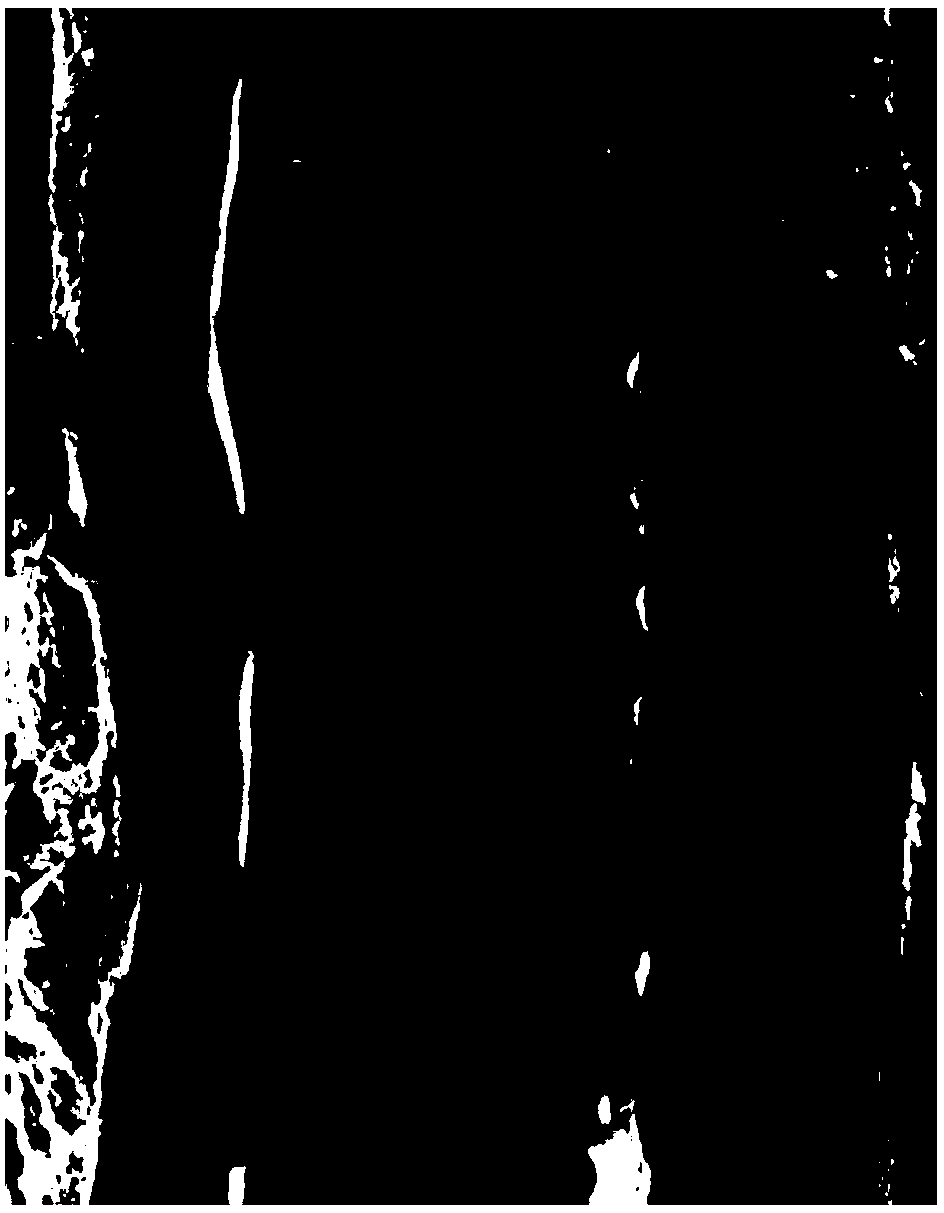Self-supportable fuel cell catalyst layer with gradient distribution structure
A gradient distribution, fuel cell technology, applied to battery electrodes, structural parts, circuits, etc., can solve the problems of preparation methods to be optimized, thin thickness, catalytic layer structure needs to be further improved, etc., to facilitate industrial application, reduce consumption, maintain The effect of catalytic performance
- Summary
- Abstract
- Description
- Claims
- Application Information
AI Technical Summary
Problems solved by technology
Method used
Image
Examples
Embodiment 1
[0050] First, take 4.4 mg, 1.1 mg, and 1.0 mg of self-made carbon nanofibers, self-made carbon nanotubes, and self-made carbon black-supported platinum catalysts (the mass fraction of platinum is 20%), mix them with 50 mL of ethanol solution in a beaker, and ultrasonically 5 minutes to make it fully mixed, then pour the mixture into a solvent filter for suction filtration, the diameter of the filter element is 4cm, to obtain the first catalytic layer.
[0051] Then take the mass of self-made carbon nanofiber, self-made carbon nanotube and self-made carbon black supported platinum catalyst (platinum mass fraction is 20%) to be 2.2mg, 1.1mg, 1.8mg respectively, and repeat the process of the first layer to obtain The catalytic layer of the double-layer structure. Then weigh 80 mg of Nafion solution with a concentration of 5%, dilute it with 0.5 mL methanol, and pour it evenly into the solvent filter. Since the structure of the first layer is relatively loose and the structure of...
Embodiment 2
[0055] First, take 4.4 mg, 1.1 mg, and 1.9 mg of self-made carbon nanofibers, self-made carbon nanotubes, and self-made carbon black-supported platinum catalysts (the mass fraction of platinum is 20%), mix them with 50 mL of ethanol solution in a beaker, and use an ultrasonic machine to sonicate 5 minutes to make it fully mixed, then pour the mixture into a solvent filter for suction filtration, the diameter of the filter element is 4cm, to obtain the first catalytic layer.
[0056] Then take the mass of self-made carbon nanofiber, self-made carbon nanotube and self-made carbon black supported platinum catalyst (platinum mass fraction is 20%) is respectively 2.2mg, 1.1mg, 3.7mg, repeat the process of the first layer, obtain The catalytic layer of the double-layer structure. Then weigh 160 mg of Nafion solution with a concentration of 5%, dilute it with 1.0 mL of methanol, and pour it evenly into the solvent filter. Since the structure of the first layer is relatively loose an...
Embodiment 3
[0060] First, take 4.4 mg, 1.1 mg, and 2.9 mg of self-made carbon nanofibers, self-made carbon nanotubes, and self-made carbon black-supported platinum catalysts (the mass fraction of platinum is 20%), mix them with 50 mL of ethanol solution in a beaker, and use an ultrasonic machine to sonicate 5 minutes to make it fully mixed, then pour the mixture into a solvent filter for suction filtration, the diameter of the filter element is 4cm, to obtain the first catalytic layer.
[0061] Then take the mass of self-made carbon nanofiber, self-made carbon nanotube and self-made carbon black supported platinum catalyst (platinum mass fraction is 20%) is respectively 2.2mg, 1.1mg, 5.7mg, repeat the process of the first layer, obtain The catalytic layer of the double-layer structure. After that, 240 mg of Nafion solution with a concentration of 5% was weighed, diluted with 1.5 mL of methanol, and evenly poured into the solvent filter. Since the structure of the first layer is relativel...
PUM
| Property | Measurement | Unit |
|---|---|---|
| specific surface area | aaaaa | aaaaa |
Abstract
Description
Claims
Application Information
 Login to View More
Login to View More - R&D
- Intellectual Property
- Life Sciences
- Materials
- Tech Scout
- Unparalleled Data Quality
- Higher Quality Content
- 60% Fewer Hallucinations
Browse by: Latest US Patents, China's latest patents, Technical Efficacy Thesaurus, Application Domain, Technology Topic, Popular Technical Reports.
© 2025 PatSnap. All rights reserved.Legal|Privacy policy|Modern Slavery Act Transparency Statement|Sitemap|About US| Contact US: help@patsnap.com



